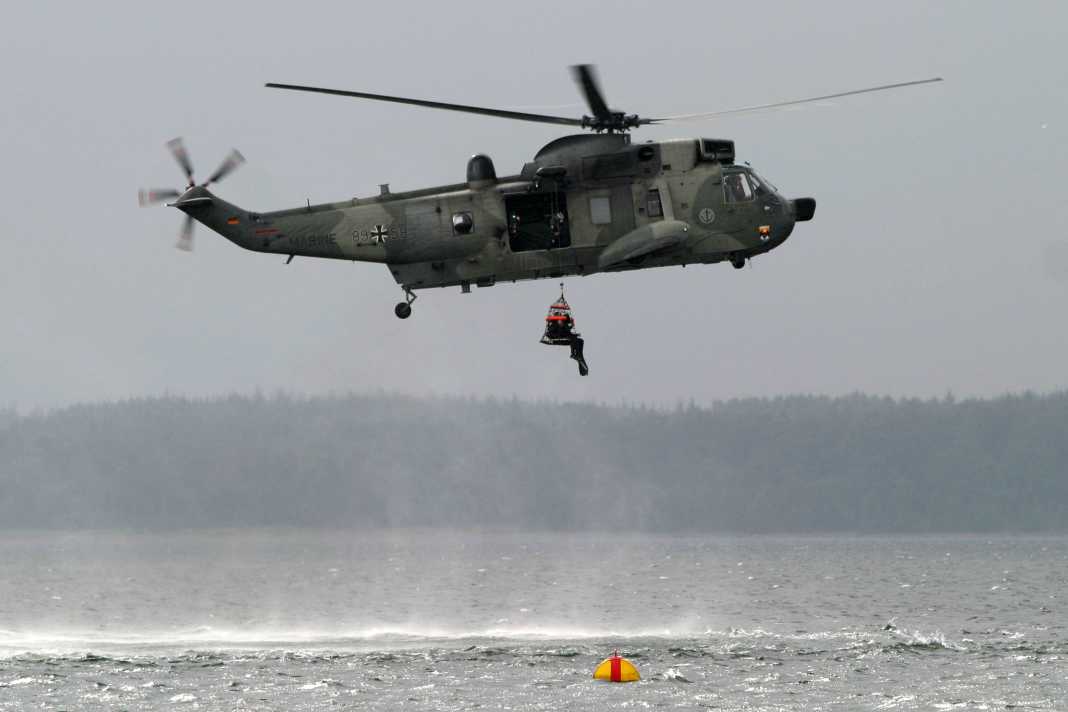Naval aviators: SAR helicopter Sea King - the king says goodbye






Fifty years of service is a long time for any type of technology, but especially for aircraft. The operational readiness of the last 21 of the 22 Sea Kings originally purchased therefore became increasingly complex and expensive. However, as the operational readiness of the successor model was delayed for decades, the clearly veteran aircraft had to last longer than originally planned. However, it did so until the end without any restrictions during exercises and missions in the sea areas along the German coasts.
More than 14000 SAR missions with the Sea King
According to the German Armed Forces, more than 14,000 mission flights have been carried out to date. While the majority of these were carried out within the classic SAR framework over the North and Baltic Seas, the Sea Kings and their three to four-man crews have also repeatedly been assigned special tasks, for example shortly after entering service during the major snow disaster of 1978/1979, during the Oder flood in 1997 and even after the devastating tsunami disaster in the Indian Ocean in December 2004.
In its home waters, its operational history was characterised from the outset by close cooperation with the German Maritime Search and Rescue Association and neighbouring rescue services. The crews of the naval aviators and the sea rescuers repeatedly trained together, with the helicopters specialising not only in coordinated searches but also in recovering shipwrecked persons from the sea and lowering them directly from on board for rapid transport to rescue facilities on land. The winch mounted above the hull door on the starboard side of the Sea King was used for this purpose.
The Sea King originally comes from the USA
The history of the helicopter goes back even further: the first flight of the Sikorsky H-3 took place in the USA in March 1959. Developed primarily as an on-board helicopter for hunting Soviet submarines, the 22-metre-long specialist, which can reach speeds of up to 120 knots thanks to its two 1500 hp engines, soon also proved to be particularly suitable for search and rescue in maritime emergencies. A total of 35 countries used the model. The British company Westland began licence production in 1969. The designation of these aircraft was Sea King Mk. 41.
The 22 Bundeswehr helicopters also originate from this production. However, flight technology, electronics and propulsion have been continually updated and their performance increased over their long service life - also because the helicopters were repeatedly assigned new task profiles for regular military use (for example on board the Navy's large task force supply aircraft).
But even when the long period of use in German service comes to an end, some of the helicopters will continue to fly: six were delivered to the Ukrainian armed forces after the Russian invasion, and nine more came from the Royal Navy.
Sea Lion: The powerful successor
The NH-90 NTH Sea Lion from Airbus Helicopters is the Navy's latest multi-purpose helicopter. The abbreviation NTH stands for Naval Transport Helicopter to distinguish it from other versions. Compared to the army model, it is equipped with a large number of sensors as well as navigation and communication devices. These include a 360-degree maritime surveillance radar and an infrared camera. It also has a harpoon for securing itself on the flight decks of ships and an automatically folding rotor for the on-board hangar.
The helicopter is mainly used for search and rescue missions and for transporting personnel and equipment. It offers space for up to 20 people on land and up to 16 people at sea - a significant increase compared to the Sea King. It is equipped with a rescue winch and special medical equipment for SAR tasks. Although it is 2.5 metres shorter than its predecessor, the maximum take-off weight of 11 tonnes is almost two tonnes higher than that of the "Sea King". The maximum speed is 175 knots and the range is over 400 nautical miles.

